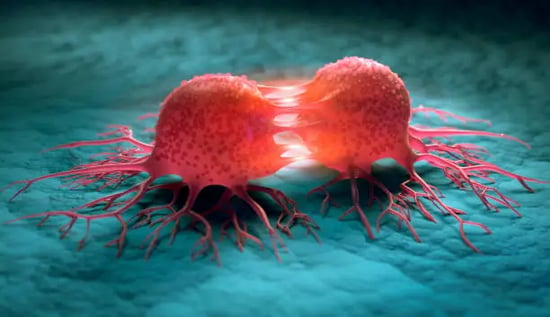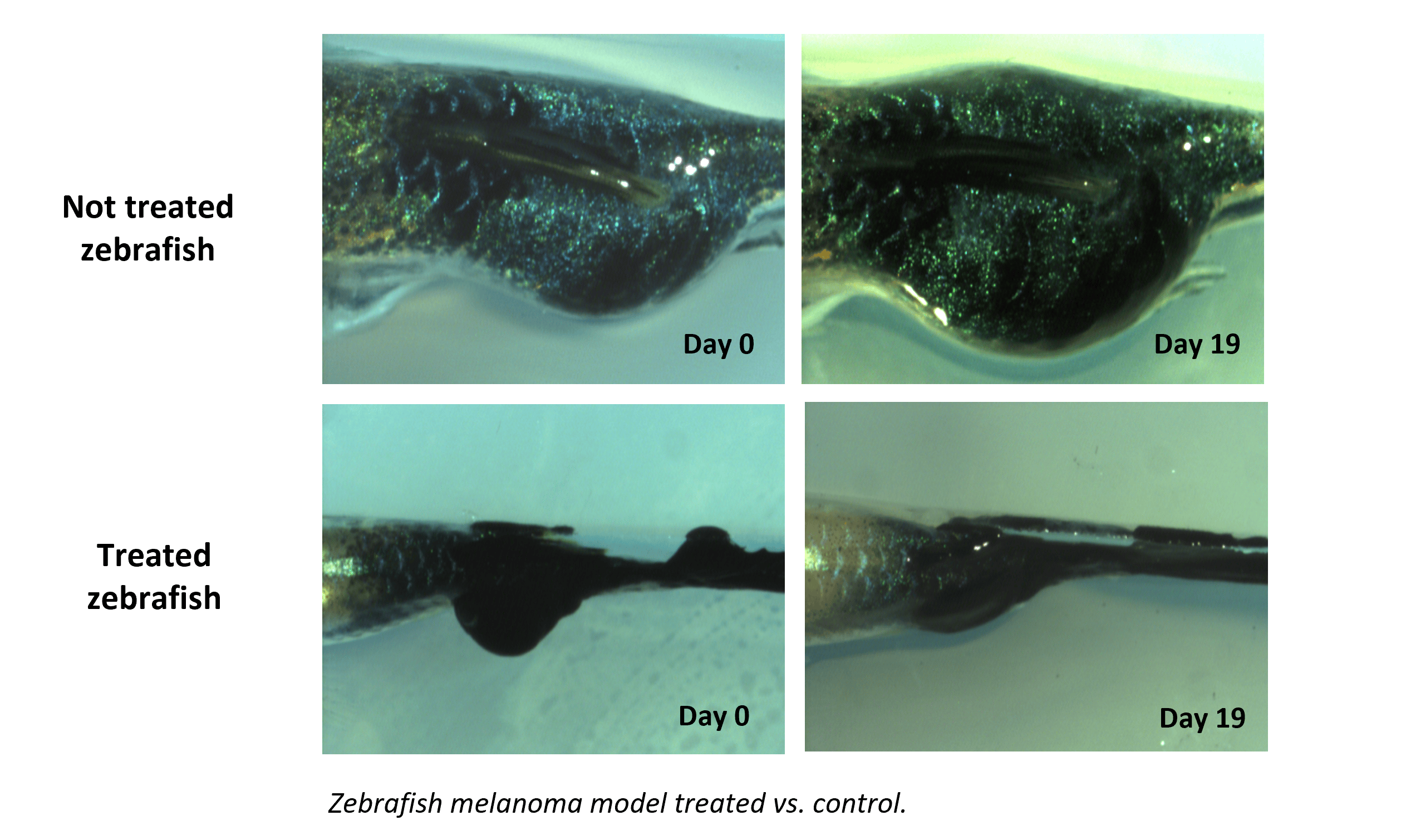Cancer is a devastating and complex disease, generated by an alteration in the cells, caused by genetic and epigenetic alterations that produce a loss of cell control mechanisms. This transforms the affected cells into uncontrolled entities able to grow limitlessly and disseminate through the organs, damaging them, and causing in the end the irremediable demise of the patient if it is not treated. When cells lose their capacity to control their growth, usually, they form tumors that can be malignant or benign, depending on their capacity to disseminate through the organ of origin or others, a process called metastasis. Malignant tumors are formed by cancerous cells and in the end leading to a cancer diagnosis; fortunately, not all tumors are malignant and can be easily cured, however, the only cure for cancer is the removal of the affected cells.
Cancer is a major health concern and is one of the most prevalent pathologies in today's society, with an extensive number of people being affected by it, increasing due to the aging of the society. Notably, around 20 million new diagnosis every year worldwide, being responsible for 10 million deaths per year, meaning that 1 out of six deaths are caused by cancer.

Although profound efforts have been made to develop different types of treatments, still half of cancer patients die. The most effective treatment option, is to surgical removing of the cancer cells before their dissemination. If the surgery is not possible the only option is to reduce or slow down tumor growth through chemotherapy, radiotherapy, or targeted therapy. These treatments in most cases can expand the life expectancy of the patient's years in some cases, but in others, they are scarcely or not effective due to the variability in the molecular alterations of the disease.
Therefore, there is an urgent need for the development of new patient-specific treatments and diagnostic tools to properly target cancerous cells and improve the early detection of the pathology to effectively reduce, or even cure, the disease.
In this sense, Patient-Derived Xenografts (PDX) is a promising research concept for the personalized treatment of cancer that allow better therapy research and selection for personalized treatments.
What is a Patient-Derived Xenograft model (PDX)
A PDX consists in taking parts of an existing tumor, from a human patient with cancer and transplanting them into a research model, making a patient’s avatar. Scientists can then monitor the progress of the disease and how the cancer cells behave with a personalized therapy, to evaluate if which treatment is more or less effective. This technique allows the discrimination between different therapies according to the molecular profile the tumor exhibits to offer the most effective and less harmful alternative to each patient.
The role of Zebrafish in PDX models
Historically, rodents and other animals have been used as usual animal models for cancer research. However, these models are known to be expensive, time-consuming, and present ethical concerns. To overcome these limitations, especially the time one, different New Alternative Models (NAM) are arising, Including zebrafish avatars.
The zebrafish model presents several advantages compared to mammals, including rapid breeding, fast development of diseases and lower maintenance costs, and being able to have high productivity: producing several hundreds of embryos at one time, making them a very cost-effective PDX model. The ability to breed and grow fast makes zebrafish PDX models a valuable research solution with major benefits over the use of mammals, as testing in rodents can take months or years to give any valid results, especially in fast and devasting oncological diseases. Allowing even looking at the same processes related to tumor growth in humans, such as distribution, dissemination, or proliferation of tumor cells, metastasis, and as well as vascularization and growth of the tumors.
Another major advantage of oncology models in zebrafish is their similarity to the human genome, which means the tumor is likely to react in the same way as in the human body.

Other cancer models in zebrafish
In addition to PDX models, there are more cancer models that offer different benefits and different approaches complementing PDX models. One of these alternative cancer models is the cell line-derived xenografts that are less demanding to develop compared with patient-derived cancerous cells, that sometimes are not able to grow well out of the patient’s body. Other interesting models are based on inducing cancer cells in the animal model, producing a realistic tumor since it belongs to its own organism with a fully developed immune system and reproducing with a trustworthy disease progression.
The induction of cancer in an animal model is also possible utilizing gene editing techniques, that are well-developed in zebrafish, or with chemical mutagens that produce random mutations. In this sense, Biobide has mutant zebrafish to key tumor suppressors such as P53 and PTEN, which misfunctioning is crucial for the development of a big percentage of cancers, offering the possibility of doing basic research on cancer genetics or new therapies too.
Zebrafish and bevacizumab in cancer research
Tumor growth and metastatic spread (when the tumor causes cancer in another part of the body from the initial site) are linked to the formation of new blood vessels (angiogenesis) which can promote the growth of cancer cells. Vascular Endothelial Growth Factor (VEGF) is linked to angiogenesis and is a key facilitator in the growth of cancer cells as it optimizes the blood flow of the cells, making them stronger and able to multiply.
There has been much research into anti-VEGF therapy as a way to prevent cancer metastatic processes. However, this is an enormously expensive and time-consuming process. One drug used to combat this growth is bevacizumab (also known as Avastin®), which is used to treat certain types of cancers, including cervical, colorectal, and lung cancer. It works by binding to VEGF protein and preventing new blood vessels from forming.
Zebrafish xenografts have been used in research into bevacizumab as a viable alternative to rodents. This form of in vivo screening produces rapid results, in as little as 4 days in some tests, which is a significant way forward for the understanding of cancer tumors.
Preclinical assays performed by specific researchers demonstrate the zebrafish xenograft shows promising results when using bevacizumab as a screening assay. It has been found that bevacizumab can reduce angiogenesis and prevent cancer cells from spreading, therefore preventing the existing tumor from developing and the metastatic spread.
Conclusion
Cancer is an important health concern worldwide due to the lethality and disability it triggers, the sizeable number of patients affected, and the poor success of the therapies available, that impacts society at every level and it does not discriminate in gender, race, social status, or age. The reason behind the low success of cancer therapies relies on the complexity of the disease, due to the accumulation of cell mutations that confer to cancer cells multiple abilities to escape to the immune system and resist different treatments. Furthermore, this genetic variability of the disease makes many different cancers, and, even, the same type of cancer in different patients can show a completely different entity with a singular molecular alteration profile, with specific treatment needs, that limit enormously the effective therapies available.
Therefore, there is an urgent need to develop personalized cancer therapies based on the molecular profile of each cancer. In this sense, developing PDX models where it is possible to set up the best therapeutic strategy for a patient can be a crucial improvement in the way we see medicine and cancer treatment research, towards individualized medicine. Specifically, zebrafish has demonstrated to be an ideal, valuable, and cost-effective NAM for PDX models, to perform large-scale screenings in a fast and efficient manner. Also, genetic, or chemical-induced cancer models have been developed in zebrafish expanding the possibilities this animal model can offer in cancer research.
Whilst the PDX zebrafish model is a successful method to study cancer, there is still much research to be carried out in order to introduce this model in clinical practice because of the reticencies, resources, and limitations this model still has.
Nevertheless, the PDX zebrafish model is a valuable cancer research model that can be transferred to patient-individualized therapy to improve the therapeutic options for this concerning condition.
Sources
- https://www.who.int/news-room/fact-sheets/detail/cancer
- https://www.ncbi.nlm.nih.gov/pmc/articles/PMC7310786/
- https://www.worldwidecancerresearch.org/news-opinion/2021/march/why-havent-we-cured-cancer-yet/
- https://jhoonline.biomedcentral.com/articles/10.1186/s13045-019-0829-z
- https://www.cancer.gov/publications/dictionaries/cancer-terms/def/bevacizumab
- https://www.karger.com/Article/Abstract/88478
- https://doi.org/10.1038/s42003-020-1015-0





